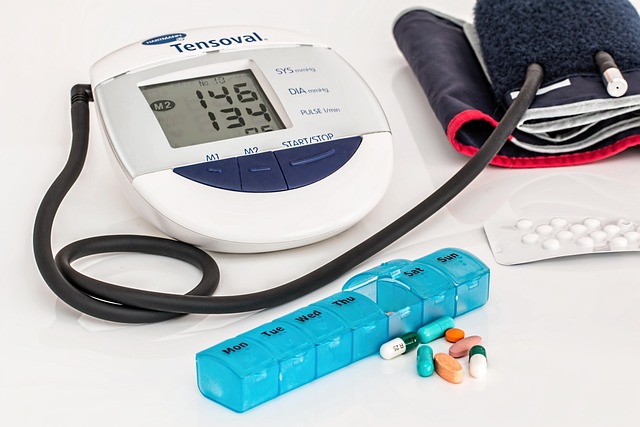Understand Angioedema Swelling And Its Impact On Your Health
Angioedema represents a serious medical condition characterized by deep swelling beneath the skin's surface, particularly affecting the face, lips, tongue, and throat. This swelling occurs when fluid accumulates in deeper tissue layers due to increased vascular permeability. Understanding the mechanisms, triggers, and treatment approaches for angioedema is crucial for anyone experiencing these symptoms, as prompt recognition and appropriate management can prevent potentially life-threatening complications and improve overall health outcomes.

Angioedema is a medical condition that causes swelling in the deeper layers of skin and mucous membranes. Unlike superficial hives or urticaria, this condition affects subcutaneous and submucosal tissues, creating characteristic deep swelling that can significantly impact breathing, swallowing, and overall comfort. The swelling typically develops rapidly and can persist for hours or days without proper treatment.
The condition occurs when blood vessels dilate and become more permeable, allowing fluid to leak into surrounding tissues. This process is often triggered by the release of inflammatory mediators, particularly histamine, from mast cells and basophils. The resulting accumulation of fluid creates the distinctive puffy appearance associated with angioedema.
What Triggers Angioedema Swelling Episodes
Multiple factors can trigger angioedema episodes, ranging from allergic reactions to genetic predispositions. Common allergic triggers include certain foods like shellfish, nuts, eggs, and dairy products. Medications, particularly ACE inhibitors used for blood pressure management, represent another significant trigger category. Environmental allergens such as pollen, pet dander, and insect stings can also precipitate episodes.
Non-allergic triggers include stress, extreme temperatures, physical pressure, and certain infections. Some individuals experience idiopathic angioedema, where no specific trigger can be identified. Hereditary angioedema represents a distinct category caused by genetic deficiencies in complement system proteins, leading to recurrent episodes without external triggers.
Recognizing Symptoms and Warning Signs
Angioedema symptoms typically manifest as asymmetric swelling affecting the face, particularly around the eyes, lips, and cheeks. The swelling feels firm and non-pitting, meaning it doesn’t leave an indentation when pressed. Unlike typical inflammation, angioedema swelling is usually painless but can cause significant discomfort due to tissue stretching.
Dangerous symptoms requiring immediate medical attention include swelling of the tongue, throat, or larynx, which can compromise breathing. Difficulty swallowing, voice changes, or breathing problems indicate potential airway involvement. Some patients also experience gastrointestinal symptoms including abdominal pain, nausea, and cramping when internal organs are affected.
Available Treatment Options for Managing Episodes
Treatment approaches vary depending on the underlying cause and severity of angioedema episodes. For allergic angioedema, antihistamines serve as first-line therapy, with both H1 and H2 receptor blockers showing effectiveness. Corticosteroids may be prescribed for severe cases or when antihistamines prove insufficient.
Epinephrine represents the emergency treatment for severe allergic reactions with angioedema, particularly when anaphylaxis is suspected. Hereditary angioedema requires specialized treatments including C1 esterase inhibitor concentrates, icatibant, or ecallantide. These medications target specific pathways involved in hereditary forms of the condition.
Long-term Management Strategies
Successful long-term management involves identifying and avoiding known triggers whenever possible. Patients should maintain detailed symptom diaries to help identify patterns and potential triggers. Allergy testing may help pinpoint specific allergens that should be avoided.
For individuals with recurrent episodes, prophylactic medications may be recommended. These can include daily antihistamines, leukotriene modifiers, or in cases of hereditary angioedema, specialized preventive treatments. Regular follow-up with healthcare providers ensures optimal management strategies and medication adjustments as needed.
| Treatment Category | Medication Examples | Typical Cost Range |
|---|---|---|
| Antihistamines | Cetirizine, Loratadine | $10-30 per month |
| Corticosteroids | Prednisone, Methylprednisolone | $15-50 per course |
| Emergency Epinephrine | EpiPen, Auvi-Q | $300-600 per device |
| Hereditary Treatments | Icatibant, C1 Inhibitor | $5,000-15,000 per dose |
Prices, rates, or cost estimates mentioned in this article are based on the latest available information but may change over time. Independent research is advised before making financial decisions.
Prevention and Lifestyle Modifications
Preventing angioedema episodes requires a comprehensive approach combining trigger avoidance with lifestyle modifications. Individuals should carry medical identification indicating their condition and known triggers. Emergency action plans should be developed with healthcare providers, particularly for those with severe allergic forms.
Stress management techniques, regular exercise, and maintaining overall health can help reduce episode frequency. Some patients benefit from elimination diets under medical supervision to identify food triggers. Environmental modifications, such as using air purifiers or avoiding known allergens, can also prove beneficial.
Understanding angioedema and its various manifestations empowers patients to recognize symptoms early and seek appropriate treatment. With proper management strategies, most individuals can effectively control their symptoms and maintain good quality of life. Regular communication with healthcare providers ensures optimal treatment approaches and helps prevent serious complications associated with this condition.
This article is for informational purposes only and should not be considered medical advice. Please consult a qualified healthcare professional for personalized guidance and treatment.




